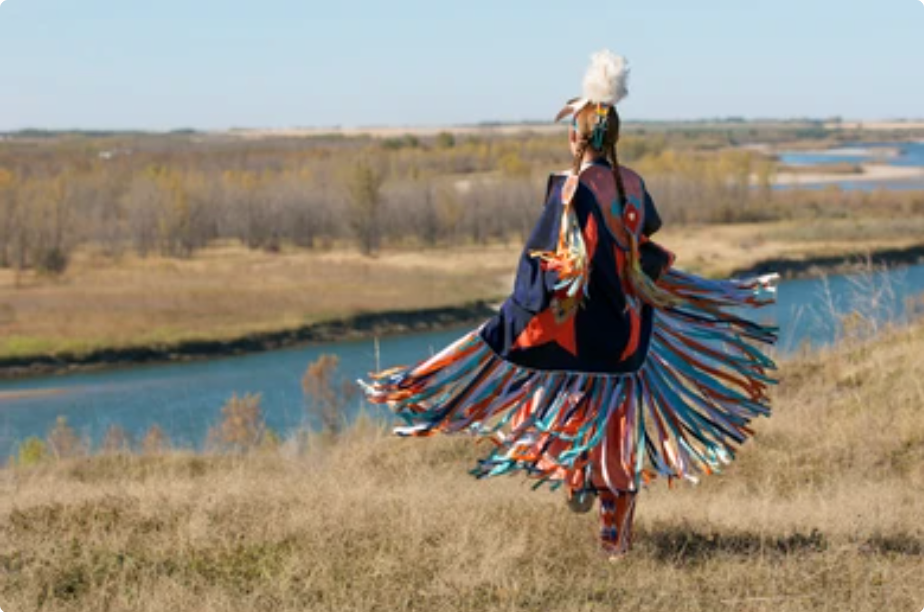
Your guide to Native appreciation and the music that brings it all together.
By Saija Maki-Waller
When’s the last time you stepped out of your comfort zone? Why not do it for delicious food, moving music and a worthwhile cause? Every year in the United States over one thousand Powwows are hosted by Native communities to showcase and support important parts of their culture.
“When you think of Native Amercians, people think of the tipis in the West,” said Araia Breedlove, event planner for the American Indian Student Cultural Center (AISCC) at the University of Minnesota. When Breedlove, who grew up on the Lac du Flambeau Reservation in northern Wisconsin, began attending high school in Milwaukee, she was met with a rude awakening. “The amount of times I had to explain what a reservation was is just devastating. So I think it’s all about education,” she said.
If you grew up in an American education system, odds are you received a skewed retelling of the colonization of Indigenous people. Often that retelling neglects Native communities today, favoring an outdated depiction. Many people can’t picture a Native today, said Breedlove. Powwows can help rectify this disconnect by inviting the public to celebrate Indigenous culture alongside the Native community.
Unsure about how to prepare for or what to do once you get to a Powwow? Here are some tips for how to go about it:
DO RESEARCH. Every Native tribe or community differs in their music, dances, languages and so much more. For example, Ojibwe dress is often decorated with floral designs while Ho-Chunk dress is more geometric. “My language is extremely different from the Dakota language and how their culture works is extremely different from mine,” Breedlove said.
Once you know which nation’s powwow you’re attending, do some research on their customs and history. It is always better to go into a new situation with a little background knowledge.
BRING FRIENDS AND FAMILY, NATIVE OR NOT. “Because it’s such a community-oriented thing, the more people that are there the better,” said Jay Radke, a student at the University of Minnesota. He attended his first powwow, the Mendota Mdewakanton Traditional Powwow, in 2022. Radke moved to the Twin Cities from Australia in high school. “I think a lot of people probably feel like if they are not Native they can’t go,” he said.
This couldn’t be further from the truth, Breedlove said.
“I think it’s just a great opportunity to learn and educate yourself, but also to immerse yourself in music and culture that you wouldn’t get anywhere else,” she said. Attending a powwow also boosts the Native economies through the support of local businesses.
TRY NEW FOODS AND BUY NEW STUFF. Powwows host Indigenous vendors for food, jewelry, clothing and more. Foods will vary by tribe, but for Ojibwe nations, some staples include maple syrup, berries, and wild rice. “Indian tacos are a huge thing,” Breedlove said. An Indian taco is prepared like a Mexican taco but instead of a tortilla, it is made on fry bread. Regardless of your dietary preferences, you are sure to find something good to eat.
Powwows are a wonderful way for local Native vendors to sell their goods. “My uncle had bought these sandals decades ago at this powwow,” said Radke, in reference to the Mendota Mdewakanton traditional Powwow. Last year his uncle flew back to Minnesota just to get them repaired.
ASK QUESTIONS AND JOIN IN. “Don’t be afraid to be immersed in the culture itself,” Breedlove said. If you have never been to a powwow before, you most likely will have questions. But don’t worry because you’re in luck! A powwow is the perfect place to ask away. Remember to be respectful and open-minded, but don’t be afraid to ask about something you aren’t familiar with. It’s how we learn. “You’re coming to acknowledge our culture so at the end of the day we’re thanking you,” Breedlove said.
FINALLY, ENJOY THE MUSIC. Most powwows are associated with one tribe or tradition, but for an event such as the AISCC Spring Powwow, members of many tribes come together to share their cultures. For Breedlove, it’s the different styles of music that bridge the gap.
“I get introduced all the time to Western tribes’ protocols and their music,” she said.
Music from the Eastern Woodlands tribes of North America, such as the Ojibwe or the Huron, often use call and response in dance songs. Alternatively, music from the Plains region tribes, such as the Oceti Sakowin and the Ho-Chunk, sing most often in unblended unison.
Music is one of the most essential connections human beings make to one another with total disregard for language or cultural barriers. By attending a powwow and hearing and participating in the music of Native people, you can better understand and appreciate cultures that are too often minimized and ignored.